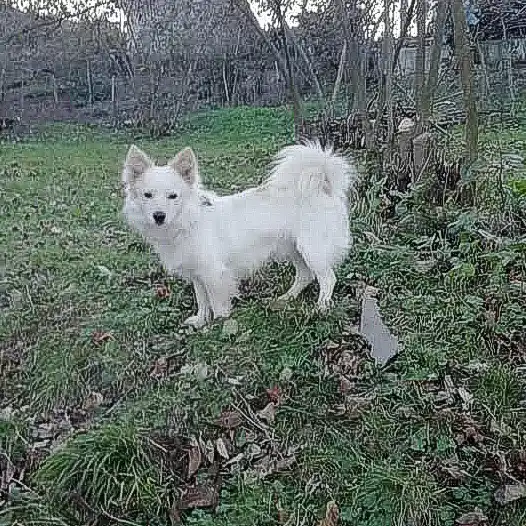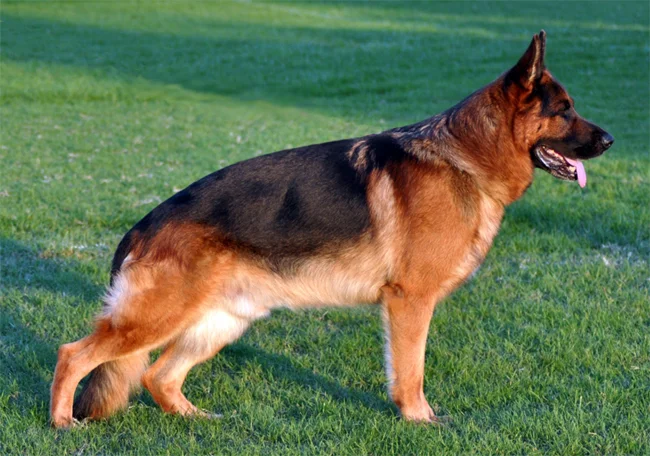French Spaniel
The French Spaniel is a medium-sized, affectionate hunting dog known for its intelligence and versatility. With a rich history in France, they excel in various activities, making them ideal companions for active families.
Overview
🐕Breed Overview
✨Key Traits
💡What Makes French Spaniel Special
French Spaniels are characterized by their versatility and adaptability. They excel in various roles, from hunting companions to family pets. Their strong work drive and intelligence make them suitable for various activities, including agility, obedience, and scent work.
They are known for their stamina and require regular exercise to keep them happy and healthy. Their affectionate nature means they thrive in active households where they can be included in family activities. Additionally, their friendly demeanor makes them well-suited for social interactions, whether with humans or other animals.
Overall, their combination of intelligence, playfulness, and loyalty makes them a beloved breed among dog enthusiasts.
The French Spaniel, known as Epagneul Francais, is a medium-sized sporting dog with a rich history rooted in France. First described in the 14th century by Gaston Phebus, this breed was favored by the French aristocracy for its exceptional hunting abilities. With a height ranging from 21 to 24 inches and a weight between 40 to 60 pounds, the French Spaniel is one of the tallest spaniel breeds, characterized by its muscular build and elegant appearance.
Their coat is typically white with brown markings, and they possess a friendly and outgoing personality, making them excellent companions for active families. These dogs require a significant amount of exercise, ideally 60 to 90 minutes daily, to keep them physically and mentally stimulated. They excel in various activities, including hunting, agility, and working trials, showcasing their versatility and intelligence.
French Spaniels are known for their affectionate nature, forming strong bonds with their owners and being particularly good with children. Their trainability is enhanced by their eagerness to please, making them suitable for both novice and experienced dog owners. Despite their robust health, French Spaniels can be affected by a condition known as acral mutilation and analgesia, which requires attention from owners.
Overall, the French Spaniel is a loving and loyal breed that thrives in active households, making them a perfect addition for those who enjoy outdoor activities and companionship.
🎉Fun Facts
French Spaniels are known for their excellent retrieving abilities, making them popular among hunters.
The breed nearly became extinct in the early 20th century but was saved by dedicated breeders.
The French Spaniel is one of the tallest spaniel breeds, often mistaken for an English Springer Spaniel.
They have a friendly disposition and are known to get along well with children and other pets.
They were favored by French royalty and often found in royal kennels during the Middle Ages.
Breed Characteristics
Family & Friends
Good Behavior
Get Up & Go
Household Harmony
Temperament & Personality
✨Key Traits
🐕Core Temperament
The French Spaniel has a well-balanced temperament, characterized by its friendly and patient nature. They are not naturally aggressive and are eager to please, making them highly trainable.
Their sociable disposition allows them to get along well with children, other dogs, and even strangers. They are known for their playful energy and require regular exercise to channel their enthusiasm positively.
While they can be independent at times, they thrive on companionship and enjoy being part of family activities. Their protective instincts make them alert watchdogs, but they are generally gentle and loving with their families.
💫Personality Profile
The French Spaniel is known for its friendly and outgoing personality. They are affectionate dogs that form strong bonds with their families, making them excellent companions.
Their playful nature means they enjoy engaging in various activities, from playing fetch to participating in agility training. They are generally good with children and other pets, showcasing their sociable temperament.
While they are not aggressive, they can be protective of their family, making them good watchdogs. Their eagerness to please and high intelligence make them relatively easy to train, although they do require consistent guidance and socialization to thrive.
🔊Vocal Tendencies
French Spaniels are generally moderate barkers. They may bark to alert their owners of strangers or unusual sounds, but they are not known for excessive barking.
Their vocalizations can vary depending on the situation; for example, they may bark excitedly during play or when greeting family members. While they are not typically yappy dogs, they do have a strong communication style, which can include whining or howling when they seek attention or express excitement.
Proper training and socialization can help manage their barking tendencies.
Affection & Social Traits
Energy & Activity
Communication Style
Care Requirements
🏃♂️Exercise Requirements
Daily Exercise
The French Spaniel is a highly active breed that requires a significant amount of exercise to maintain its physical and mental well-being. Ideally, they should engage in at least 60 to 90 minutes of vigorous exercise daily. This can include activities such as long walks, running, swimming, and playing fetch.
They thrive in environments where they can explore and utilize their natural hunting instincts, so activities like agility training or participating in working trials can be particularly beneficial. Puppies require shorter, more frequent exercise sessions to avoid overexertion, while senior dogs may need gentler activities to accommodate their energy levels. Regular exercise not only helps manage their weight but also reduces the risk of behavioral issues stemming from pent-up energy, such as chewing or excessive barking.
Without adequate exercise, French Spaniels may become restless and develop destructive behaviors.
Preferred Activities
🏠Living & Adaptability
Space Requirements
French Spaniels are medium-sized dogs that adapt well to various living environments, but they do best in homes with ample outdoor space. A house with a large yard is ideal, as it allows them to run and play freely.
However, they can also thrive in apartments or smaller homes if their exercise needs are met through regular outdoor activities. Owners living in smaller spaces should ensure they provide sufficient daily exercise and mental stimulation to prevent boredom.
It's important to note that without enough space to move around, French Spaniels may exhibit signs of anxiety or frustration, leading to destructive behaviors.
Climate Preference
🍲Feeding Guide
Schedule
Food Types
Portion Size
Special Nutritional Needs
French Spaniels do not have specific dietary restrictions, but it is essential to provide a balanced diet rich in protein to support their active lifestyle. Owners should monitor their weight and adjust food portions accordingly to prevent obesity, which can lead to health issues. Regular veterinary check-ups can help identify any dietary needs or sensitivities.
✨Grooming Requirements
Grooming Overview
The French Spaniel has a medium-length, dense coat that requires regular grooming to keep it healthy and free of mats. Their coat sheds moderately, so brushing at least once a week is recommended to remove loose hair and prevent tangles.
During shedding seasons, more frequent brushing may be necessary. Bathing should be done as needed, typically every few months or when they become particularly dirty.
Regularly check and clean their ears to prevent infections, and trim their nails every few weeks to maintain proper foot health. Overall, grooming is manageable and should be part of the dog's regular care routine.
Care Schedule
Brush weekly; bathe as needed (every few months); trim nails every 2-4 weeks.
Health Profile
⚕️Health Care
Regular veterinary care is essential for maintaining the health and lifespan of a French Spaniel. Routine check-ups, vaccinations, and preventive treatments for parasites are crucial.
Early detection of health issues can lead to more effective management and treatment. Owners should also be proactive in monitoring their dog's health and behavior, ensuring they receive appropriate care throughout their life stages.
Health Issues Overview
⏳Average Lifespan
Genetic Factors
Genetics play a significant role in the French Spaniel's lifespan, with certain hereditary health issues potentially affecting their longevity. Responsible breeding practices that prioritize genetic diversity can help reduce the risk of inherited conditions. Prospective owners should seek reputable breeders who conduct health testing and provide clear lineage information to ensure they are adopting a healthy puppy.
Living Conditions
The French Spaniel thrives in environments that provide ample space for exercise and exploration. Access to outdoor areas is crucial for their physical activity, which directly impacts their lifespan.
A home with a yard or proximity to parks is ideal. Additionally, social interactions with humans and other dogs contribute positively to their mental health, enhancing their overall well-being and longevity.
Exposure to various environments, including different terrains and weather conditions, can also help them adapt and remain healthy throughout their lives.
🏥Common Health Issues
Acral Mutilation and Analgesia
Warning Signs
🔬Diagnosis
Diagnosis is typically made through clinical observation of symptoms and ruling out other conditions.
💊Treatment
Treatment may include behavioral therapy, medications to reduce anxiety, and in severe cases, surgical intervention.
📝Management Tips
Affected dogs may require behavioral modification to prevent self-mutilation, and veterinary care for any secondary infections. It's crucial to monitor their behavior closely and provide a safe environment.
🛡️Preventive Care
🔬Hip Evaluation
This test assesses the dog's hips for dysplasia, a common issue in many breeds, including the French Spaniel. Early detection can help manage potential problems.
📅 Annually after 2 years of age.
🔬Genetic Health Screening
This test screens for common genetic disorders that may affect the breed, ensuring that breeding practices minimize hereditary health issues.
📅 Every 2-3 years, or as recommended by a veterinarian.
Training
🧠Intelligence & Trainability
💪Work Drive
French Spaniels have a strong work drive, stemming from their history as hunting dogs. They thrive when given tasks to complete, whether it's retrieving a toy, participating in agility courses, or engaging in scent work.
This need for mental stimulation is crucial for their overall well-being. Without adequate engagement, they may become bored and exhibit undesirable behaviors.
Owners should aim to provide a variety of activities that challenge both their physical and mental capabilities, ensuring they remain happy and fulfilled.
⚠️Training Considerations
While French Spaniels are generally eager to please and trainable, they can exhibit some behavioral challenges if not properly socialized or exercised. Common issues include separation anxiety, especially if they are left alone for long periods, and a tendency to become bored without sufficient mental stimulation.
To overcome these challenges, early socialization and consistent training are essential. Engaging them in various activities, such as obedience training, agility, or scent work, can help channel their energy positively.
Additionally, providing them with interactive toys and puzzles can keep their minds active and reduce the likelihood of destructive behaviors.
📝Training Tips
Training a French Spaniel can be a rewarding experience, as they are intelligent and eager to learn. Positive reinforcement methods, such as treats and praise, work best with this breed. Start training early, focusing on basic commands and socialization with other dogs and people.
Consistency is key; regular training sessions will help reinforce good behavior. Incorporating fun activities, such as agility or retrieving games, can keep them engaged and motivated. It's important to be patient and understanding, as they may have a stubborn streak at times.
Regularly changing training routines can also help maintain their interest and enthusiasm.
History & Heritage
📜Origin Story
The French Spaniel's story begins in France, where it was first mentioned in the writings of Gaston Phebus in the 14th century. This breed was developed as a hunting dog, prized for its ability to point and retrieve game. During the Middle Ages, it became a favorite among the French aristocracy, often found in royal kennels.
The breed's popularity continued until the early 20th century when it faced near extinction due to the rise of English hunting breeds. Father Fournier, a dedicated priest, took it upon himself to save the breed by gathering the remaining French Spaniels and establishing a breeding program. His efforts led to the formation of the French Spaniel Club in 1921, ensuring the breed's preservation and recognition.
Today, the French Spaniel is celebrated for its hunting skills and affectionate nature, making it a cherished companion.
⏳Development History
The French Spaniel's development can be traced back to the 14th century, with its origins speculated to be linked to the Crusades. By the 1660s, it was recognized as a distinct type of spaniel, separate from the King Charles Spaniel.
The breed gained prominence among French royalty, particularly at the courts of Versailles, where it was favored for hunting. However, by the early 20th century, the breed faced decline due to competition from foreign sporting breeds.
Father Fournier's efforts in the 1900s to gather remaining French Spaniels were crucial in preserving the breed. The French Spaniel Club was established in 1921, and the breed has since been recognized by various kennel clubs, although it remains in the AKC's Foundation Stock Service.
🛡️Purpose & Historical Role
Historically, the French Spaniel was bred for hunting, specifically for pointing and retrieving game. Its role as a hunting companion was significant, particularly in the royal courts of France, where it was used for falconry and net hunting.
The breed's ability to work closely with hunters and its keen sense of smell made it an invaluable asset in the field. Over time, the French Spaniel has also adapted to various roles, including participation in agility competitions and as a loving family companion.
🏺Cultural Significance
The French Spaniel has a rich history intertwined with French nobility and hunting traditions. First described in the 14th century by Gaston Phebus, Count of Foix, in his book 'Livre de Chasse', this breed was favored by aristocrats for its hunting prowess.
During the Middle Ages, it was a common sight in royal kennels, often used for falconry and net hunting. The breed's popularity waned by the 20th century, leading to near extinction, but dedicated efforts by enthusiasts, particularly Father Fournier, helped revive it.
Today, the French Spaniel is recognized in various countries and continues to be celebrated for its hunting abilities and affectionate nature, making it a beloved companion and working dog.
Conservation Status
This breed is less common but has stable populations in certain regions.









